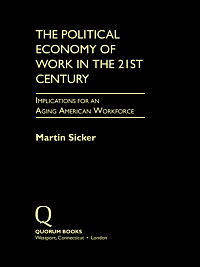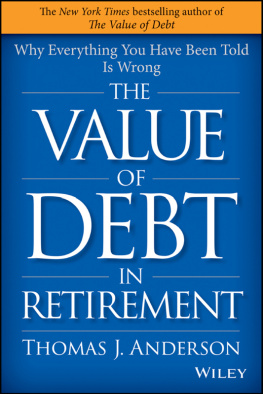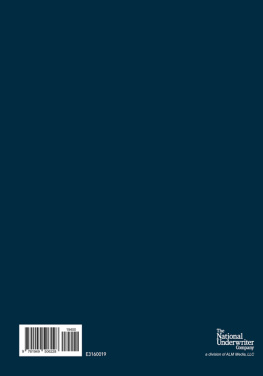Cover

| title | : | The Political Economy of Work in the 21st Century : Implications for an Aging American Workforce |
| author | : | Sicker, Martin. |
| publisher | : | Greenwood Publishing Group |
| isbn10 | asin | : | 1567205666 |
| print isbn13 | : | 9781567205664 |
| ebook isbn13 | : | 9780313011788 |
| language | : | English |
| subject | Aged--Government policy--United States, Aging--Economic aspects--United States, Age distribution (Demography)--Economic aspects--United States. |
| publication date | : | 2002 |
| lcc | : | HQ1064.U5S533 2002eb |
| ddc | : | 362.6/0973 |
| subject | : | Aged--Government policy--United States, Aging--Economic aspects--United States, Age distribution (Demography)--Economic aspects--United States. |
Page i
THE POLITICAL ECONOMY OF WORK IN THE 21ST CENTURY
Page ii
This page intentionally left blank.
Page iii
THE POLITICAL ECONOMY OF WORK IN THE 21ST CENTURY
IMPLICATIONS FOR AN AGING AMERICAN WORKFORCE
Martin Sicker

QUORUM BOOKS
Westport, Connecticut London
Page iv
Library of Congress Cataloging-in-Publication Data
Sicker, Martin.
The political economy of work in the 21st century : implications for an aging American
workforce / by Martin Sicker.
p. cm.
Includes bibliographical references and index.
ISBN 1567205666 (alk. paper)
1. AgedGovernment policyUnited States. 2. AgingEconomic aspectsUnited
States. 3. Age distribution (Demography)Economic aspectsUnited States. I. Title.
HQ1064.U5S533 2002
362.60973dc21 2001058597
British Library Cataloguing in Publication Data is available.
Copyright 2002 by Martin Sicker
All rights reserved. No portion of this book may be
reproduced, by any process or technique, without the
express written consent of the publisher.
Library of Congress Catalog Card Number: 2001058597
ISBN: 1-56720-566-6
First published in 2002
Quorum Books, 88 Post Road West, Westport, CT 06881
An imprint of Greenwood Publishing Group, Inc.
www.quorumbooks.com
Printed in the United States of America

The paper used in this book complies with the
Permanent Paper Standard issued by the National
Information Standards Organization (Z39.481984).
10 9 8 7 6 5 4 3 2 1
Page v
CONTENTS
Introduction | vii |
| The Real World of Work and Retirement | |
| The Changing Employment Environment | |
| The Restructuring of American Business | |
| Globalization of the Economy | |
| Downsizing and Its Consequences | |
| The Decline of Corporate Paternalism | |
| Restructuring the Workforce | |
| Downwaging the Workforce | |
| The Question of the Minimum Wage | |
| Corporate Responsibility Revisited | |
Page vi
| National Employment Policies | |
| National Economic Policies | |
Conclusion | |
Selected Bibliography | |
Index | |
Page vii
INTRODUCTION
The average age of the population of the United States, and of other industrialized nations, is increasing. This is not only one of the consequences of a relatively low birthrate that is slowing population growth, it is also being brought about simply because people generally are living longer and healthier lives, a tribute to the advances in medical science and other environmental factors. Suffice it to note that in 1900 there were about 3,500 centenarians in the United States. Today the number is estimated to be about 66,000. We are becoming a progressively older society, and that fact presents a series of concerns that should engage our attention.
This was brought home to us most dramatically in late 1998 with the space odyssey of senior citizen John Glenn. As pointed out by one journalist, the fact that a 77-year-old man is now orbiting the globe is a vivid reminder of the debate were not having on earth. This, of course, involves Americas inevitable aging.1 That debate should be over what we must do to reconstitute our society, its values, policies and institutions, to meet the challenge before us. However, as a society, we have a tendency to avoid dealing with broad and seemingly overly complex issues, and only do so as infrequently as possible. As a result, the debate that is just beginning to take place in earnest has essentially been limited to that of how to respond to the anticipated growth in national expenditures for the elderly in the forms of Social Security and Medicare.
Page viii
When Congress enacted Social Security in 1935 and set the age of retirement at 65, the average life expectancy was 62 years. Not surprisingly, the number of people in the general population over age 65 was quite small. By the time Medicare was enacted 30 years later, life expectancy had risen to 70 years. The age of eligibility was predicated on the assumption that almost everyone over 65 that was eligible for the benefit was probably in some stage of serious illness and incapacity and therefore dependent on others to a significant extent for their sustenance. Since the enactment of Medicare, life expectancy has risen to 76 years and may be expected to increase further in the decades to come. Clearly, the increase in life expectancy has significant implications for the level of national expenditures attributable to an aging population.
It is frequently suggested that the costs of Social Security and Medicare for a rapidly growing elderly population impose an increasingly heavy burden on younger workers who finance these programs through payroll taxes, those taxes levied directly on their earnings from employment. Assuming that current retirement trends persist, this dependency burden, the number of pension beneficiaries compared with the number of pension contributors, has been estimated as 23.8 per 100 in 1995, 24.4 in 2010 and 40.0 in 2030.2 Moreover, and assuming that 1995 Social Security contribution rates as a percentage of wages remain constant, the balance of pension revenue and expenditures is projected to be 1.1 percent in the year 2000, 1.7 in 2010, and -2.2 in 2030.3 It is the implications of these numbers that has become a matter of serious concern.
Next page








